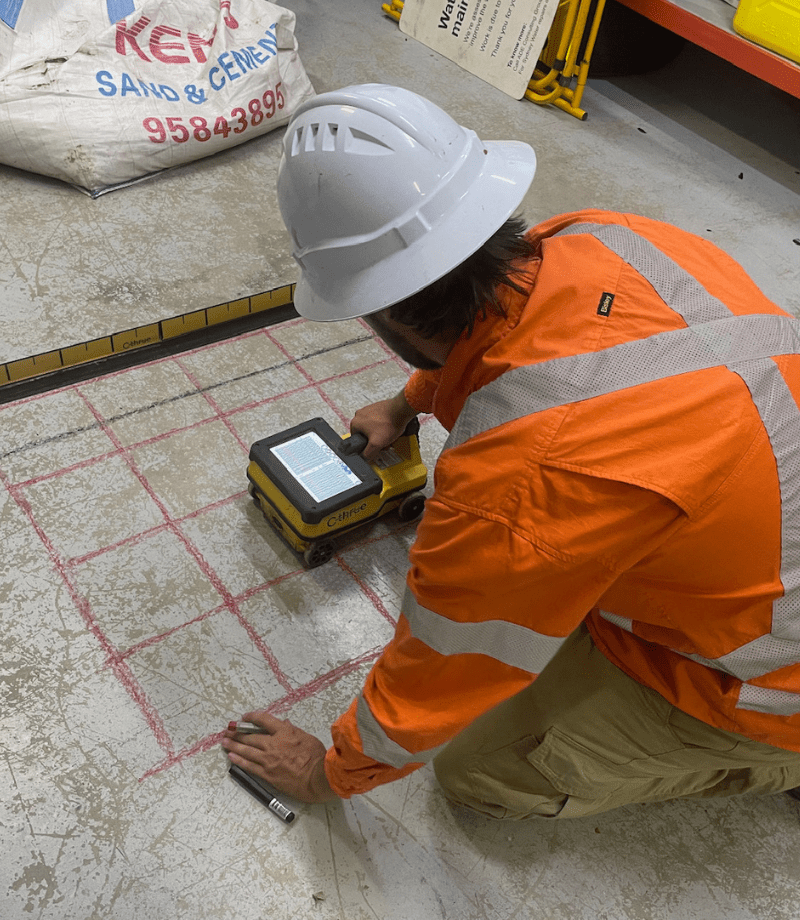Advanced RainierGPR Concrete Scanning Providers Introduced
Advanced RainierGPR Concrete Scanning Providers Introduced
Blog Article
Exploring the Depths: A Comprehensive Overview to Concrete Scanning and Its Diverse Applications
In the realm of building and construction and infrastructure advancement, the thorough procedure of concrete scanning holds a crucial role in making sure the structural honesty and safety of tasks. As innovation proceeds to evolve, the applications of concrete scanning have increased far past plain surface-level assessments.
Relevance of Concrete Scanning
Comprehending the value of concrete scanning is vital in making sure the safety and security and honesty of frameworks throughout building and construction and remodelling jobs. Concrete scanning makes use of advanced technologies such as ground-penetrating radar (GPR) and electro-magnetic induction to discover ingrained things, voids, or various other anomalies within concrete frameworks - RainierGPR Concrete Scanning. By performing extensive scans before boring, cutting, or coring into concrete, building teams can prevent unintended damages to vital structural aspects like rebar, channels, or post-tension cords. This proactive technique not just protects against costly repair work and job hold-ups however also boosts total building and construction security by reducing the threat of architectural failures or collapses as a result of jeopardized honesty.
Furthermore, concrete scanning plays a critical duty in making certain compliance with building regulations and regulations that mandate the protection of existing structural parts throughout building activities. By properly mapping out the internal make-up of concrete, scanning innovations make it possible for construction experts to make enlightened decisions that support the architectural security and toughness of buildings and infrastructure jobs. Essentially, the value of concrete scanning depends on its capability to safeguard both the architectural stability and the personnel included in building undertakings.
Technologies Utilized in Concrete Scanning
Concrete scanning counts on innovative modern technologies such as ground-penetrating radar (GPR) and electro-magnetic induction to precisely spot embedded items and abnormalities within concrete structures. Ground-penetrating radar operates by producing high-frequency electro-magnetic waves into the concrete.
Electro-magnetic induction, on the other hand, works by producing magnetic fields around a concrete structure through a transmitter coil. When metal things are existing within the concrete, they interrupt these magnetic fields, triggering eddy currents to move via the steel. By determining the modifications in the magnetic fields with a receiver coil, the system can pinpoint the area of metallic things in the concrete.
These innovative technologies play a crucial duty in non-destructive testing, making sure the safety and security and stability of concrete structures in numerous sectors.
Applications in Construction Industry
Within the construction sector, concrete scanning modern technology discovers varied applications that boost task effectiveness and safety. One key application is the detection of rebar, post-tension wires, and various other embedded things before drilling or reducing into concrete frameworks. By accurately mapping out these aspects, building groups can avoid pricey damages, make sure architectural integrity, and avoid potential safety threats. Additionally, concrete scanning is utilized for finding Visit Website gaps, such as air pockets or areas of degeneration within concrete, which can endanger the overall strength of a structure. By recognizing these spaces at an early stage, construction experts can take required procedures to resolve them and preserve the resilience of the building. Concrete scanning plays an essential role in high quality control by verifying the thickness of concrete covers over support, making certain conformity with style specifications and criteria. On the whole, the applications of concrete scanning in the building and construction market contribute substantially to enhancing job process, minimizing risks, and delivering high-quality outcomes.

Safety Advantages of Concrete Scanning
In the realm of building security, the implementation of concrete scanning innovation provides a paramount advantage in preemptively determining potential hazards and strengthening architectural integrity. By using sophisticated scanning techniques such as ground-penetrating radar (GPR) and electro-magnetic induction, building groups can accurately situate rebar, post-tension cable televisions, conduits, and other hidden things within concrete structures. This aggressive technique substantially reduces the danger of unintentional strikes during boring, cutting, or coring tasks, consequently stopping expensive damages, injuries, and project hold-ups.
Additionally, concrete scanning improves employee safety and security by giving real-time information about the structural condition of concrete elements. By dealing with prospective safety concerns promptly, concrete scanning adds to developing a safe and secure functioning setting and minimizing the possibility of architectural failings or accidents on construction websites.
Future Patterns in Concrete Scanning
Emerging developments in scanning innovation are positioned to transform the field navigate to this website of concrete assessment and evaluation. By taking advantage of the power of AI, these systems can assess huge amounts of information gathered throughout scanning processes to provide even more precise and comprehensive insights into the condition of concrete frameworks.
An additional significant pattern is the growth of even more mobile and user-friendly scanning tools. Miniaturization of scanning equipment enables less complicated access to restricted rooms and remote areas, making assessments a lot more effective and extensive. Additionally, developments in cordless communication innovations make it possible for real-time information transfer and evaluation, facilitating quicker decision-making processes.
Additionally, there is an expanding concentrate on sustainability in concrete scanning innovations - RainierGPR Concrete Scanning. Producers are progressively incorporating environmentally friendly materials and energy-efficient features right into their tools to lower ecological effect. These future trends are set to boost the efficiency, accuracy, and sustainability of concrete scanning techniques, forming the market's future landscape
Conclusion
In verdict, concrete scanning plays a crucial role in the building and construction market by making sure the safety and performance of different jobs. important source As technology breakthroughs, the future of concrete scanning holds appealing developments for boosting construction procedures.

Report this page